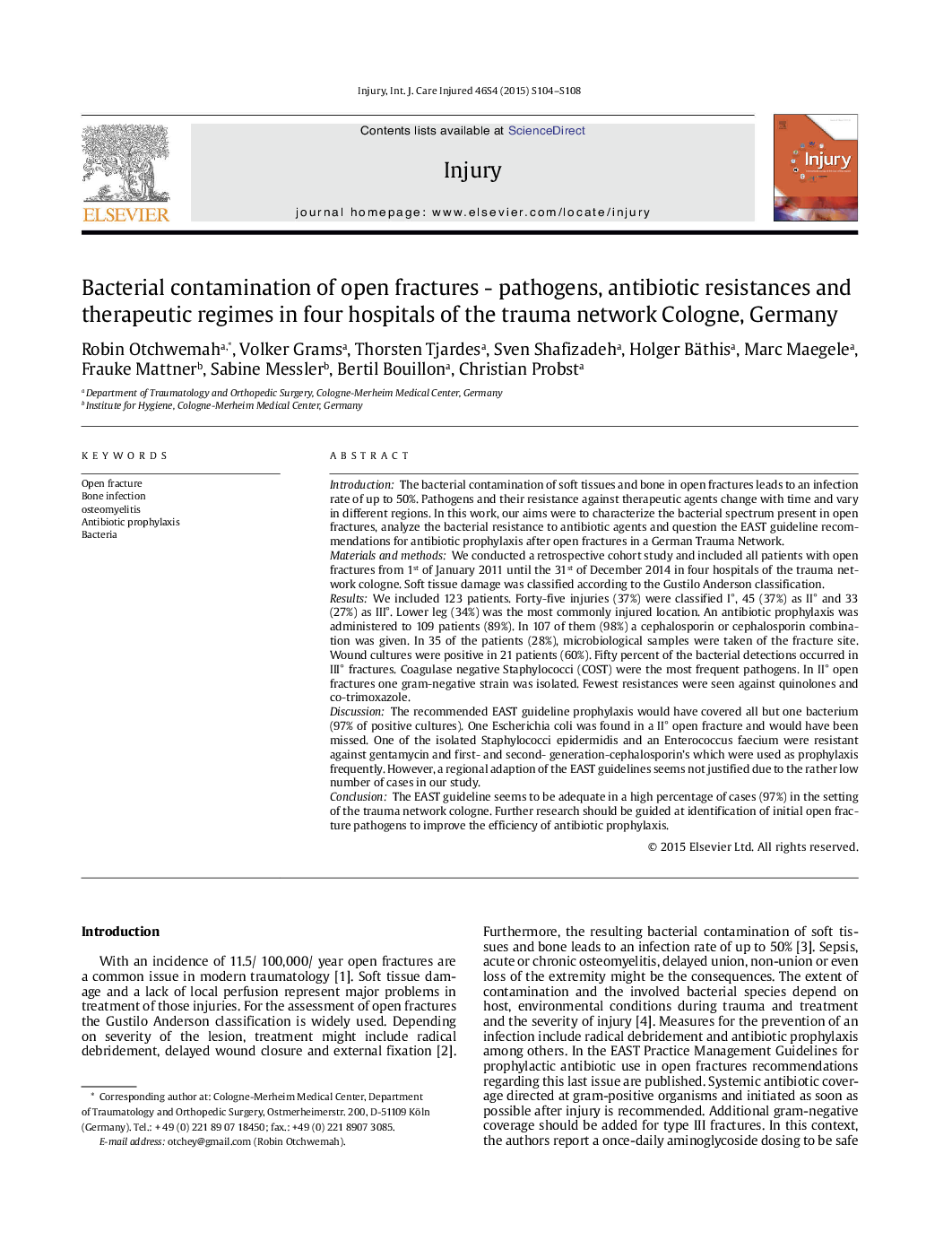| کد مقاله | کد نشریه | سال انتشار | مقاله انگلیسی | نسخه تمام متن |
|---|---|---|---|---|
| 3239360 | 1205998 | 2015 | 5 صفحه PDF | دانلود رایگان |
IntroductionThe bacterial contamination of soft tissues and bone in open fractures leads to an infection rate of up to 50%. Pathogens and their resistance against therapeutic agents change with time and vary in different regions. In this work, our aims were to characterize the bacterial spectrum present in open fractures, analyze the bacterial resistance to antibiotic agents and question the EAST guideline recommendations for antibiotic prophylaxis after open fractures in a German Trauma Network.Materials and methodsWe conducted a retrospective cohort study and included all patients with open fractures from 1st of January 2011 until the 31st of December 2014 in four hospitals of the trauma network cologne. Soft tissue damage was classified according to the Gustilo Anderson classification.ResultsWe included 123 patients. Forty-five injuries (37%) were classified I°, 45 (37%) as II° and 33 (27%) as III°. Lower leg (34%) was the most commonly injured location. An antibiotic prophylaxis was administered to 109 patients (89%). In 107 of them (98%) a cephalosporin or cephalosporin combination was given. In 35 of the patients (28%), microbiological samples were taken of the fracture site. Wound cultures were positive in 21 patients (60%). Fifty percent of the bacterial detections occurred in III° fractures. Coagulase negative Staphylococci (COST) were the most frequent pathogens. In II° open fractures one gram-negative strain was isolated. Fewest resistances were seen against quinolones and co-trimoxazole.DiscussionThe recommended EAST guideline prophylaxis would have covered all but one bacterium (97% of positive cultures). One Escherichia coli was found in a II° open fracture and would have been missed. One of the isolated Staphylococci epidermidis and an Enterococcus faecium were resistant against gentamycin and first- and second-generation-cephalosporin's which were used as prophylaxis frequently. However, a regional adaption of the EAST guidelines seems not justified due to the rather low number of cases in our study.ConclusionThe EAST guideline seems to be adequate in a high percentage of cases (97%) in the setting of the trauma network cologne. Further research should be guided at identification of initial open fracture pathogens to improve the efficiency of antibiotic prophylaxis.
Journal: Injury - Volume 46, Supplement 4, October 2015, Pages S104–S108
